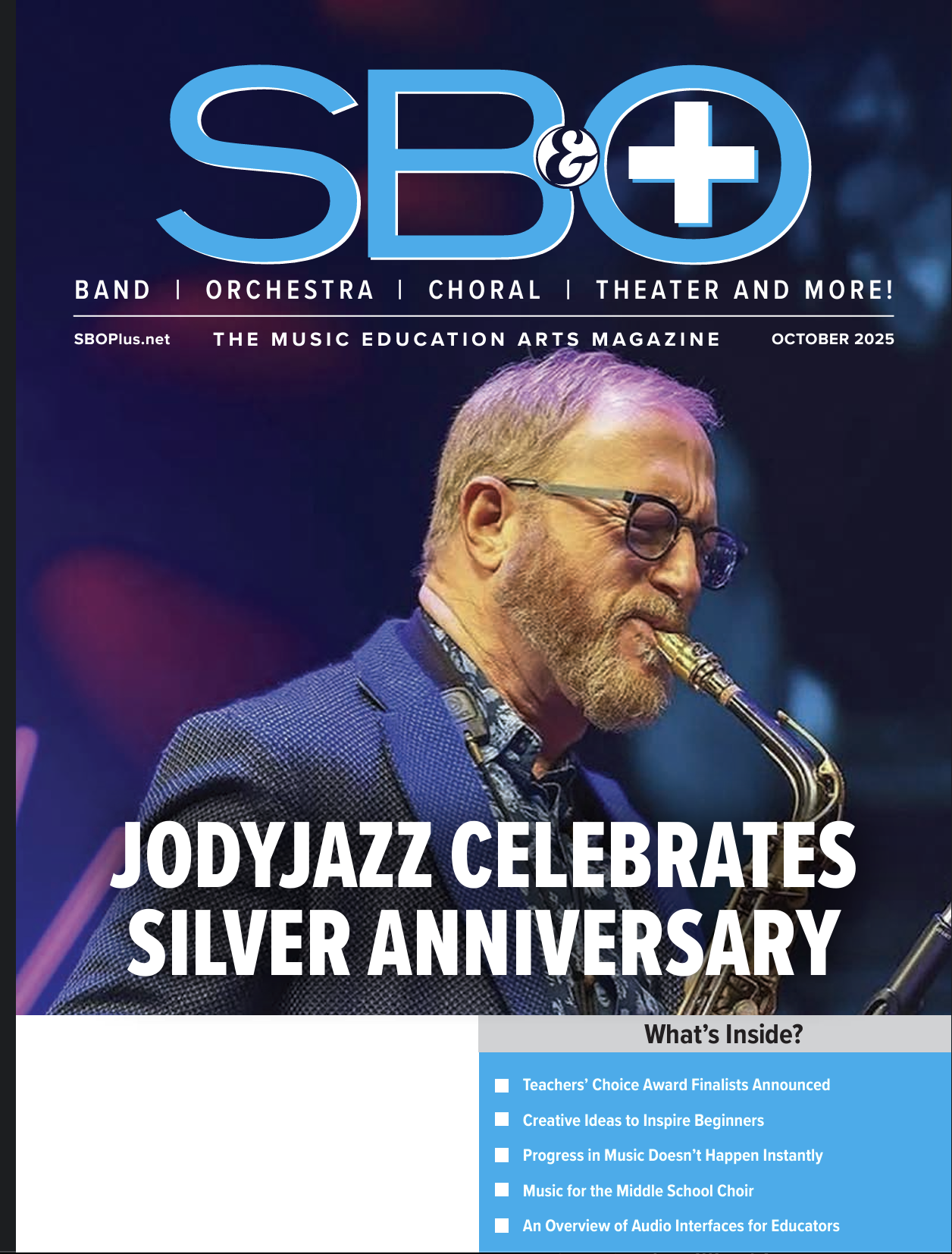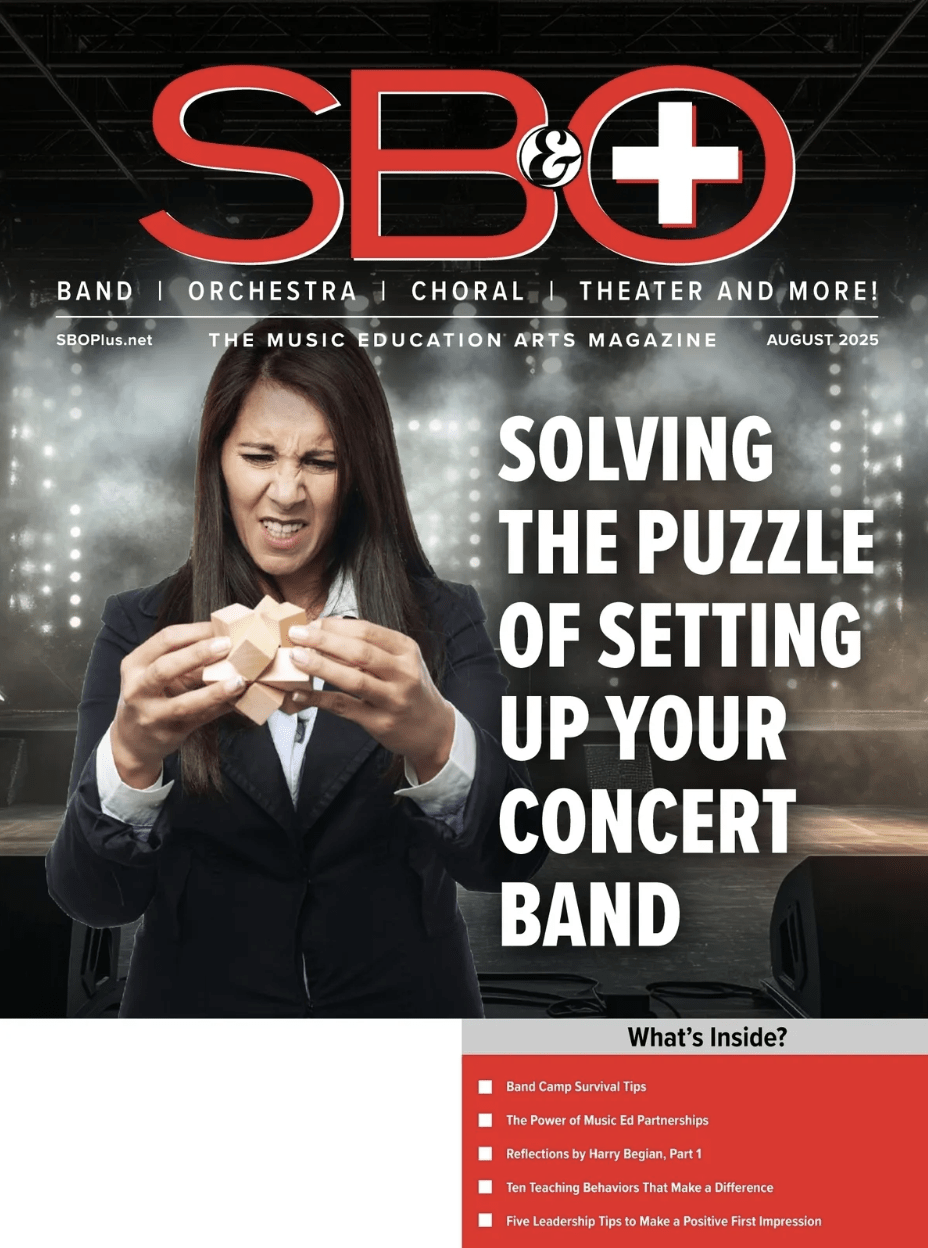
Have you ever experienced something in your life where you could later remember every detail – what you wore, who you were with, what you had for dinner, and each conversation you participated in? Paradoxically, have you ever forgotten where you put your keys, or your password for an online account? How many times in a given week do you have to remind students of a particular F#, or to pay attention to the crescendo going into the B section? And why is it that learning seems so tedious leading up to a concert, but there is a sudden leap in the learning curve right after a concert?
In his best-selling book, “Brain Rules: 12 Principles for Surviving and Thriving at Home, Work, and School,” Dr. John Medina speaks of encoding as the brain’s intellectual process of collecting and organizing information. There are different types of encoding one uses to process new information, and the specific type has much to do with recall later. Structural encoding is considered the simplest form, and involves identifying shapes like naming notes, rhythms, or musical expressions. That’s how we recognize a “C,” an eighth note, or a crescendo. Semantic encoding involves being aware of the definitions of words, such as understanding what a crescendo means. Phonemic encoding involves comparisons of how words sound. There are many other types of encoding processes, but they share common characteristics among them. Three of these characteristics germane to our discussion:
- The more elaborate the processing at the time of learning, the stronger the memory is.
- The parts of the brain that process the initial stimulus also appear to store the new information.
- Memories might be strengthened by replicating conditions of the initial understanding.
First, a more elaborate or unique experience usually creates a more memorable one. Toward that end, we often employ clinicians to work with a group before a festival or contest to heighten the performance level of the group. Students experience a new person with a new voice and inflection, different conducting style – often more animated – and maybe with a new interpretation. It’s very evident that the stimulation provided by a “fresh” experience logically leads to enhanced learning and retention.
Another successful processing technique is to apply a narrative story to a musical work. This device is also used by composers as an organizational tool in their writing process. Sometimes the “story” is revealed, and sometimes not. Regardless, the story has the potential to create a more heightened experience. This detail-enhanced process brings new meaning to the students and creates more memorable rehearsals. If you could create this type of memorable experience when a work is first introduced to the students, then every teaching moment can be tied into the story. Soloists become lead actors, and sections become the chorus. The F# is an event in the story, the crescendo the entrance of a storm, the attacks and releases representing choreographed ensemble dance, the musical style representing script, and tone color depicting elaborate costuming. The students not only learn quicker and at a higher level, they retain the knowledge better and longer.
The second characteristic of neural encoding is that the brain’s processing of an initial stimulus appears to guide subsequent new information. Presenting a descriptive narrative at the onset of learning a new piece will guide everyone’s learning and interpretations of the work from the first note. Using a consistent story to guide the learning of the work, rather than trying different stories on different days or presenting a story after the work is learned, will help students build memories based on pre-established neural pathways, strengthening previously learned material by connecting it with new ideas.
If it is a goal for everyone to share the same vision of a composition for ensemble unity and cohesiveness, what if visual images were shown to the players prior to beginning rehearsals on a new work? The pictures could exist separately from or with a story. A single image could be used for an entire work, or a different visual for separate movements. Pictures include colors and textures that can be represented in music, and they provide students with a shared vision for new information to connect to, physiologically and conceptually. The images could be printed and handed out, or projected in front of the group during rehearsals. Perhaps you have done or seen a concert where interpretive visuals were projected as part of a performance for the audience to enjoy. How often in the concert preparation process were those pictures presented to the students to guide their learning and memory? Unfortunately, in most all cases it has been more common to show them days before the concert, if at all. Thanks to neurological advances shared in “Brain Rules,” we now know these pictures could also be an effective tool to learning musicianship and retaining information by providing a physical process for organizing new information. When that notorious F# becomes the note sung by the bluebird in the tree on the mountain in a memorable picture, then more immediate success and longer retention is the result.
The third encoding characteristic we might leverage comes from the idea that memories are more easily retrieved and recalled when the conditions of the initial processing are replicated. We all know that feeling of déjà vu when we hear certain tunes that are significant to our personal experiences. Consider how an unfamiliar environment such as a performance space that is different than our rehearsal facility can affect memory recall. This is an example of context-dependent learning. Since we can’t always perform in our rehearsal space (nor would we want to), having ways to recreate normal conditions might help with memory recall. The aforementioned use of a story or image(s) that has been used to guide the learning of a work from the first rehearsal can certainly serve as a familiarizing condition. Conducting patterns and gestures that are similar to those consistently used in rehearsal can also be a contextual consistency. If at all possible, having students practice in the performance space at least once, and also visualizing practicing in the space prior to performances can create another familiarizing condition. If the ensemble seating in rehearsal has to be different in any way in the performance space, then the opportunity to practice in the way the students will actually perform becomes important for retaining instructional concepts and practices.
The more a student focuses on the actual meaning and context of new information (higher-order thinking), the more elaborate the processing is and the better the information is retained. There are risks with using this powerful information. If a student doesn’t truly understand meanings, the memories will take “incorrect” neural paths that students will nonetheless remember. This can be problematic, obviously. It doesn’t require cutting-edge research to know that it’s more difficult to unlearn-and-relearn skills and concepts than it is to learn them correctly in the first place! So if you are using associations (narrative, metaphor, simile, and so on) to help teach, you need to become a good storyteller, and your tales should make sense to the students in the context of their own experiences. If you are using graphic images, then they should be clear and visible to all involved – literally and figuratively. It is essential to create scenarios relevant to the learners, and not just the director. It’s so easy to forget that the students do not have the background experiences of the conductor and can easily “get lost“ in anecdotes of adults’ experiences. Real-life examples, stories, or pictures used to stimulate the physical processing of memory are most useful when they have direct associations with information already in the learner’s brain.
Joseph Allison is the director of bands and coordinator of Conducting Studies at Eastern Kentucky University. He is also a co-founder of The Marching Roundtable (www.marchingroundtable.com). Prior to these positions, Dr. Allison was the director of Bands and Orchestras at Sumter (S.C.) High School, where his program became the first internationally to be honored by the John Philip Sousa Foundation as laureates of both the Sudler Flag of Honor for concert excellence and the Sudler Shield for marching achievement. Allison maintains an active international schedule of clinics and adjudications in the concert, marching, and jazz activities. He can be reached directly at [email protected] or [email protected]
Erin Wehr currently teaches music education at the University of Iowa, and has also taught at Eastern Kentucky University and The University of Missouri. In addition, Ms. Wehr has directed elementary and secondary instrumental music programs in Iowa and Illinois, taught general music, and holds Orff certification. She has served as a clinician, adjudicator, and guest conductor for elementary and secondary music programs; drum and bugle corps; and adult and community music groups.






















